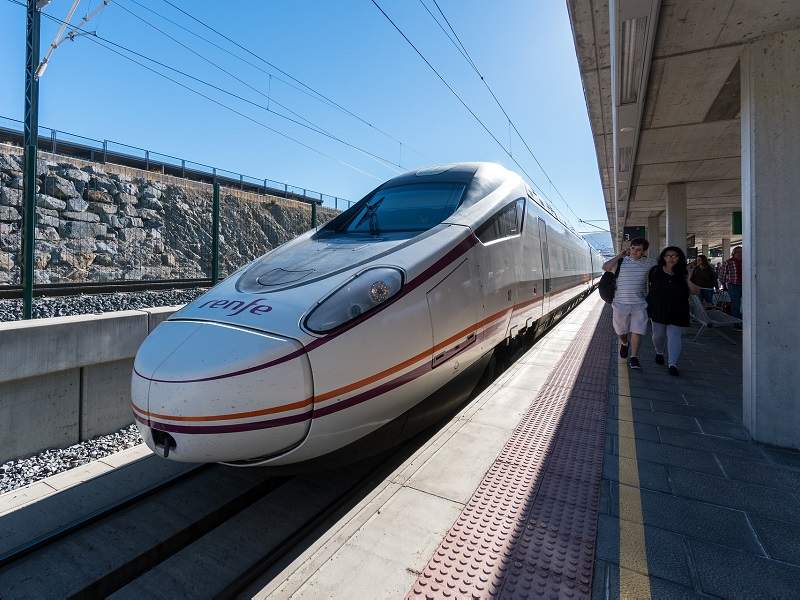
The European Union’s efforts to build efficient high-speed railway projects across the continent are bringing ‘low added value’ and the services are failing to perform at their potential best, a study by the European Court of Auditors (ECA) has revealed.
In a report published on Tuesday, the ECA, the EU’s spending watchdog, hit out at Europe’s rail network and accused it of being slow, expensive and an ‘ineffective patchwork’. This, it said, is mostly due to the fact that projects are often driven by politics rather than necessity.
“The decision to build high-speed lines is often based on political considerations, and cost-benefit analyses are not used generally as a tool to support cost-efficient decision-making,” the ECA says in the report.
The auditors analysed data from six EU countries that covered 5,000km and found trains rarely operated at full speed and ran on average at 45% of their potential velocity, with none of those examined going above 250km/h.
The ECA said it expects member states to miss targets set by the EU of having 31,000km of high-speed rail tracks by 2030, as only 9,100km of it was built by 2017 and 1,700km is currently under construction.
“We found that the EU’s current long-term plan is not supported by credible analysis, is unlikely to be achieved, and lacks a solid EU-wide strategic approach,” the auditors said.
How well do you really know your competitors?
Access the most comprehensive Company Profiles on the market, powered by GlobalData. Save hours of research. Gain competitive edge.

Thank you!
Your download email will arrive shortly
Not ready to buy yet? Download a free sample
We are confident about the unique quality of our Company Profiles. However, we want you to make the most beneficial decision for your business, so we offer a free sample that you can download by submitting the below form
By GlobalDataPart of the cause is that the time needed to build the tracks is on average 16 years. This, according to the ECA, will lead to one of the most recent projects, the Munich-Verona line running through Austria, to be completed in 2040, 37 years after works started, due to the lack of political interest for Germany.
In response to the report, the European Commission said it has an EU-wide strategic plan called the Trans-European Network for Transport regulation. All 28 members and the European Parliament approved the new rules in 2013, officially allowing the EU to partly fund projects and sanction those that failed to meet its requirements. However, the ECA’s report focuses on projects started before 2013.
An EU executive said: “The commission remains committed to the conclusions and the identified measures following from the strategy outlined in the 2011 white paper and continues to put forward and implement the actions necessary to fulfil the objectives set out in the document.”
The ECA added that although both the EU and the European Investment Bank contributed to the projects by investing respectively €23.7bn and €29.7bn, the commission still has no power to force governments to build transnational tracks.
According to the report, another key problem is that different national railway legislations are causing obligatory layovers at borders. This issue is particularly evident at the border between France and Spain where passengers have to change platforms when crossing.
“Because most of the section between Bordeaux and the Spanish border is not a priority for France, infrastructure at the border remains antiquated, incompatible and poorly suited to a modern high-speed rail network,” the ECA said.
The watchdog suggested more realistic and easier plans should be adopted in the future when it comes to crossing borders.



